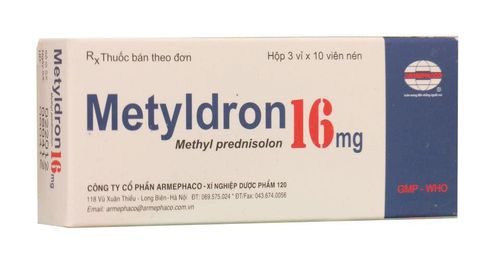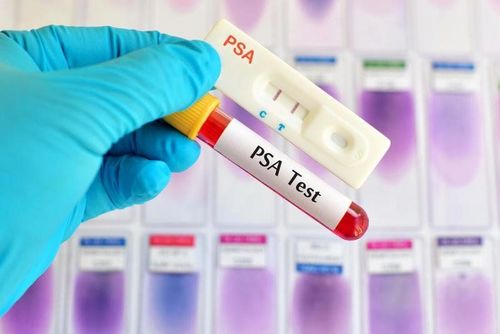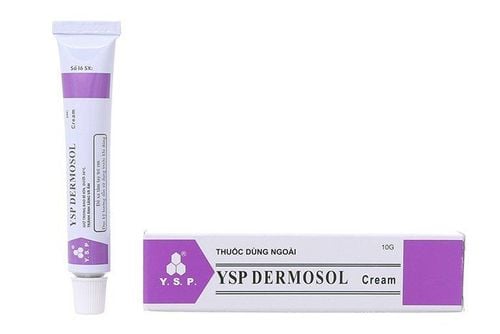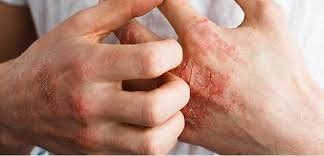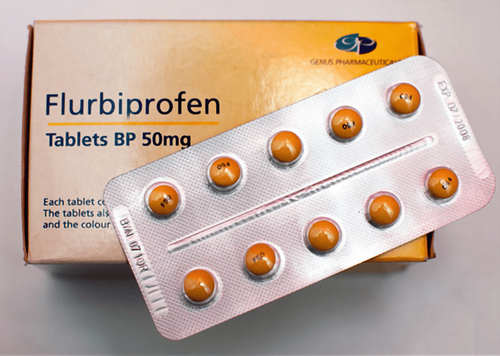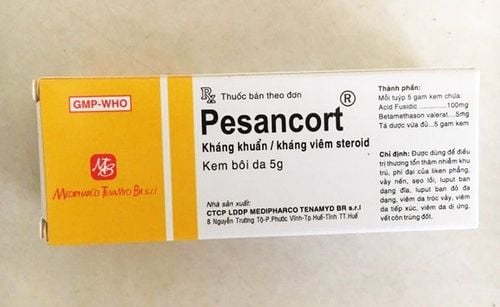This is an automatically translated article.
Psoriatic arthritis often develops after the onset of psoriasis, but some people experience joint pain before they notice any skin-related symptoms. Here are 11 symptoms to watch for if you think you may have psoriatic arthritis.1. What is psoriatic arthritis?
Psoriatic arthritis (PsA) is a type of arthritis that occurs in some people with psoriasis. Psoriasis is a condition in which red, scaly patches form on the skin. About 30 percent of people with psoriasis have arthritis, and it's most common in people between the ages of 30 and 50. There's no link between psoriasis severity and severity. of psoriatic arthritis.
Psoriatic arthritis is a condition that combines the swollen, painful joints of arthritis with psoriasis. PsA can be mild or severe and involves one or more joints. In PsA, the immune system attacks the joints and skin. Doctors don't know for sure what causes these attacks. They think it stems from a combination of genes and environmental factors.
Risk factors for psoriatic arthritis. You are more likely to get PsA if you:
Have psoriasis Have a parent or sibling with PsA Are between the ages of 30 and 50 (although children can get it too) Have strep throat Having HIV PsA puts you at risk for complications including:
Psoriatic arthritis mutilans Eye problems, such as conjunctivitis or uveitis Cardiovascular disease
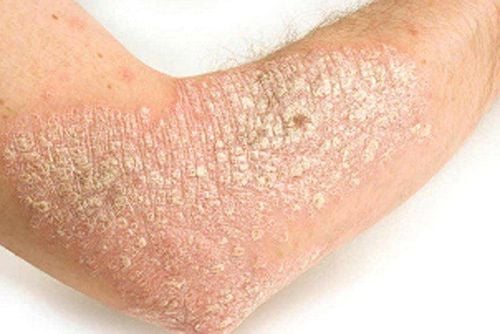
Khi bị vẩy nến, người bệnh có nguy cơ cao mắc phải viêm khớp vẩy nến
2. 11 early signs of psoriatic arthritis
Symptoms of PsA are different for each person. They can range from mild to severe. Sometimes your condition will improve and you will feel better for a while. Other times, your symptoms may get worse. Your symptoms also depend on the type of PsA you have. Here are 11 signs of psoriatic arthritis
2.1 Joint pain or stiffness
Psoriatic arthritis causes pain and stiffness. You may feel this in just one joint or in many joints. Psoriatic arthritis usually affects the knees, fingers, toes, ankles, and lower back. Symptoms of pain and stiffness may go away at some point, then return and get worse at other times. Sometimes the symptoms subside for a while and this is called remission. When it gets worse it is called a flare.
2.2 Joint swelling
Swelling in the joints due to inflammation is a common sign of psoriatic arthritis. Inflamed tissues generate heat, so your joints may also feel warm to the touch.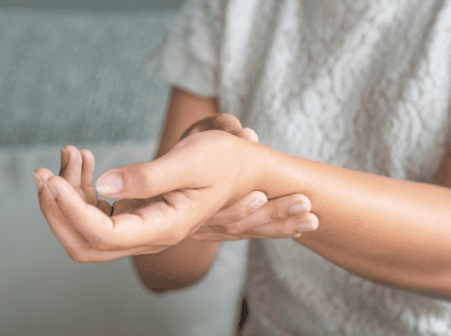
Sưng khớp là triệu chứng thường gặp ở bệnh viêm khớp vẩy nến
2.3 Pimpled nails
Nail changes, such as pitting, can be an early sign of psoriatic arthritis. Pimpled nails appear bumpy or dented. Psoriasis itself can also affect the nails, making them look like they have a fungal infection. People with psoriatic nail changes are at increased risk of developing psoriatic arthritis.
2.4 Split nails
Nails that fall off or separate from the nail ridge is called onycholysis. This can also be a sign of psoriatic arthritis. This can happen with or without pitting.
2.5 Lower back pain
Psoriatic arthritis can lead to a condition called spondylitis, which causes swelling in the joints of the spine. In some cases, the sacroiliac joints (SI joints) of the pelvis actually fuse together.
2.6 Swollen fingers or toes
Psoriatic arthritis can start in smaller joints, such as the fingers or toes, and progress from there. Swollen, sausage-like fingers and toes, known as dactylitis, are a hallmark of psoriatic arthritis. Unlike other types of arthritis, psoriatic arthritis tends to make your entire finger or toe appear swollen, rather than just the joint.
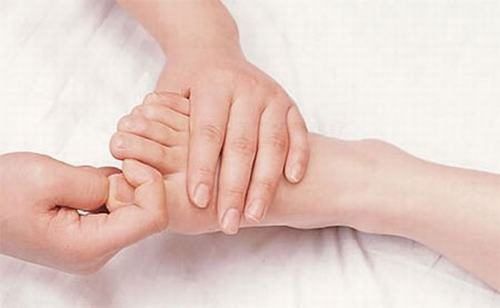
Ngón chân sưng có thể xảy ra khi bị viêm khớp vẩy nến
2.7 Inflammation of the eye
People with psoriatic arthritis may experience eye problems, such as eye inflammation and redness. If your eyes are inflamed, you may feel irritation, pain, or redness in and around your eyes. You may also notice changes in your vision.
2.8 Foot pain
Pain in the feet or ankles can be a sign of psoriatic arthritis. People with psoriatic arthritis often develop adhesions, which is pain where tendons attach to bone. This tends to show up as pain, swelling, and tenderness in the heel (Achilles tendon) or the bottom of the foot.
2.9 Elbow pain
Arthritis can also involve the elbow. Symptoms of inflammation affecting the elbow include pain and difficulty moving the elbow.
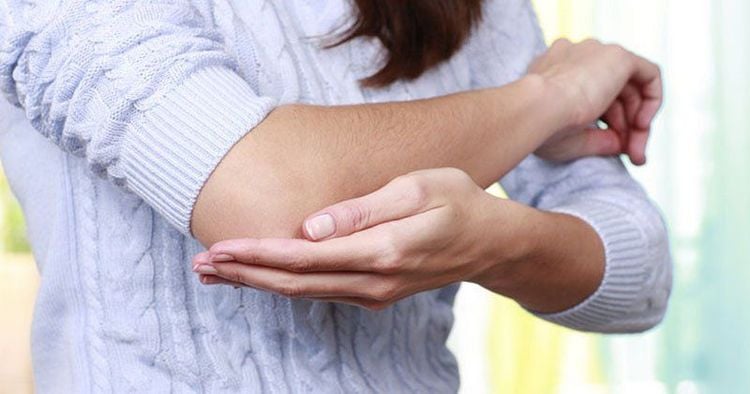
Người bệnh viêm khớp vẩy nến có thể bị đau khuỷu tay
2.10 Reduced range of motion
One possible sign of psoriatic arthritis is reduced range of motion in the joint. You may find it more difficult to extend your arms, bend your knees, or bend forward. You may also have problems using your fingers effectively. This can lead to problems for people who do manual work such as typing and drawing.
2.11 Tired
A general feeling of fatigue, ranging from fatigue to exhaustion, is a common symptom in people with psoriatic arthritis. You may start to have trouble throughout the day without taking a nap.
Not everyone with psoriasis develops psoriatic arthritis, but it's important to be aware of its symptoms if you have psoriasis. Treating psoriatic arthritis early can help you avoid joint damage.
Some people with psoriatic arthritis have very mild symptoms that only cause problems over time. Others have severe and debilitating symptoms. The more severe the symptoms, the more PsA will affect your ability to move. People with multiple joint damage may find it difficult to walk and perform other daily activities. To improve your condition, follow the treatment regimen your doctor prescribes. You may have to try many medications to find the one that works best for you.
Vinmec International General Hospital is one of the hospitals that not only ensures professional quality with a team of leading medical doctors, modern equipment and technology, but also stands out for its examination and consultation services. comprehensive and professional medical consultation and treatment; civilized, polite, safe and sterile medical examination and treatment space. Customers when choosing to perform tests here can be completely assured of the accuracy of test results.
If you have a need for consultation and examination at the Hospitals of the National Health System, please book an appointment on the website for the best service.
Articles refer to the source: healthline.com




